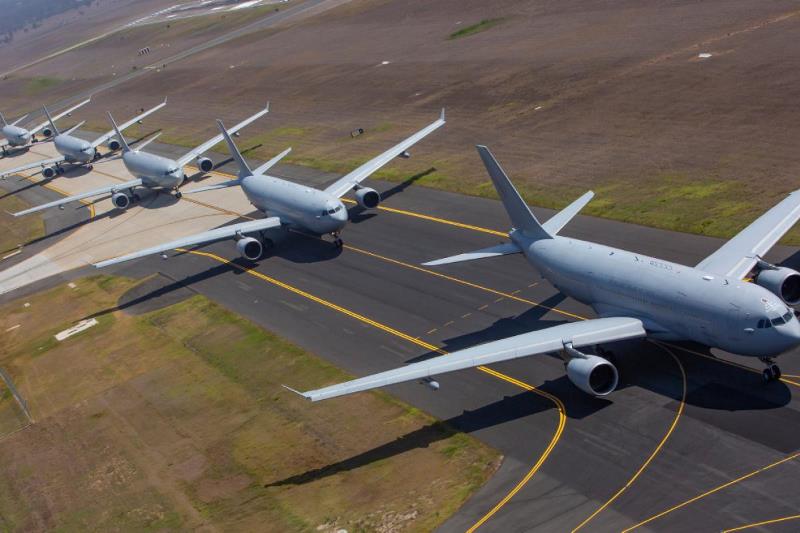
The Royal Australian Air Force’s (RAAF) No 33 Squadron (33SQN) has performed an ‘elephant walk’ with five KC-30A Multi-Role Tanker Transports (MRTTs).
The feat was conducted last month at RAAF Base Amberley in Queensland, Australia.
33SQN is an air-to-air refuelling and strategic transport squadron that operates Airbus KC-30A MRTT aircraft.
An elephant walk involves formations of military aircraft taxiing before take-off.
The KC-30As involved in the operation were lined up in a stretch covering more than 500m of the taxiway.
No 86 Wing Commanding Officer group captain Steve Pesce said: “Launching five KC-30A aircraft demonstrates a capacity to concurrently transport over 1,000 passengers or ferry more than 40 Hornets across Australia.

US Tariffs are shifting - will you react or anticipate?
Don’t let policy changes catch you off guard. Stay proactive with real-time data and expert analysis.
By GlobalData“Alternatively, five aircraft could position 1,800km from base and offload 250t of fuel to receivers over four hours. The capacity to project this magnitude of air power at range has previously been beyond airforce.”
Four of the aircraft left for separate missions after the completion of the feat. The missions include air-to-air refuelling training, airlift, and flight test development.
The squadron operates seven KC-30A aircraft. One of the remaining two is undergoing scheduled heavy maintenance while the other is supporting the Operation Okra mission in the Middle East.
The RAAF received the first KC-30A in 2011 and the seventh in 2019.
33SQN has been working on improving the maintenance and availability of the tanker aircraft. It launched a rolling maintenance programme earlier this year.
Senior Engineering Officer squadron leader David Burns said: “The programme involved the unit learning to limit itself to only one KC-30A down for scheduled servicing at any given time.
“Doing this injected enough maintenance activities into an aircraft to clear it for six weeks of multi-role operations.”



